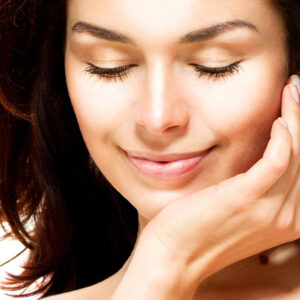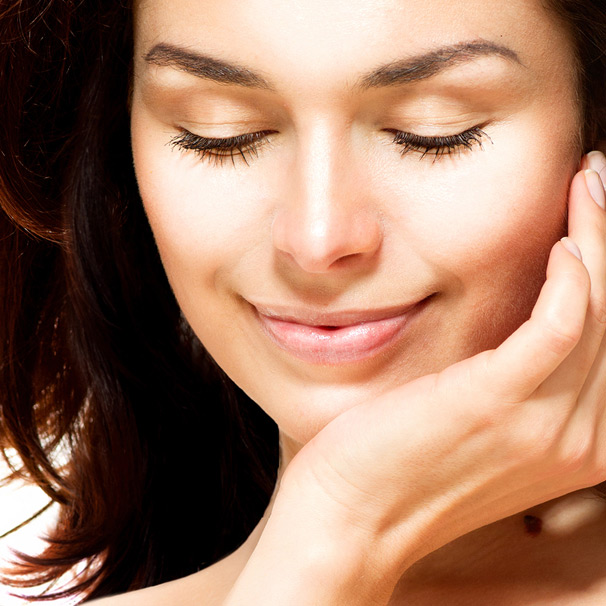Retin A, Retinoids, Retinol & Vitamin A Creams
Retin A was developed more than 30 years ago as an acne treatment. It's actually a twisted form of the Vitamin A molecule. Dermatologists prescribe it not just for acne but for a wide variety of other skin concerns that respond to exfoliating agents and "keratolytics" (a product that removes a plug out of a hair follicle or sweat gland). Since then, a wide range of prescription molecules have been developed as well as their cosmetic counterparts.
What's Vitamin A Got To Do With It?
Exactly what does vitamin A do? By its very nature, vitamin A causes drying of the skin and exfoliation. A bevy of prescription and OTC vitamin A topical preparations make use of this side effect to treat a variety of skin concerns.
The term Retinoid refers to any Vitamin A based molecule. It's a category, similar to saying antibiotic. They may all be related, but some are stronger and more effective than others.
A retinoid has the ability to help unplug pores, even out skin discoloration, restore vibrancy to the complexion, reduce oiliness, treat skin concerns such as acne and psoriasis (the prescription versions) and improve the appearance of fine lines and wrinkles.
Topical Vitamin A has also been suggested to help build collagen fibers within the dermis, helping to restore the skin's elasticity and further improve fine lines.
From Acne Cream to Proven Wrinkle Treatment
It can be difficult to figure out what all of the various names and strengths of prescription vitamin A creams on the market mean. Retin A is undoubtedly the most widely recognized brand name of vitamin A cream. In recent years though, the active molecule tretinoin has been marketed under a variety of names (Retin A, Avita and Atralin Renova), some with different uses. Other retinoids that have come to market include Tazarotene (Tazorac and Avage) and Adapalene (Differin). Some are mixed with other ingredients such as Ziana (tretinoin plus antibiotic clindamycin) and Tri-Luma (tretinoin with skin bleaching hydroquinone and steroid fluocinolone). Cosmeceutical retinoids include (in descending level of effectiveness) Retinol, Retinyl Palmitate and HPR (Hydroxypinnacolone Retinoate).
The use of these prescription retinoids can have side effects you won't like if you don't listen to the doctor's instructions and pay close attention to what your skin is telling you.
Surprisingly, Vitamin A cosmeceuticals such as retinol and retinyl palmitate counterparts (usually used for skin rejuvenation) are thought to be mild and irritation-free. This could not be further from the truth. You typically need to approach and use all topical vitamin A products in a similar manner, unless directed otherwise by your doctor.
What to watch for:
Redness
Burning/Stinging
Peeling/Exfoliation
Increased Sunburn Potential
These side effects are why I created DERMAdoctor Poetry in Lotion 1% Retinol. The patent-pending formulation contains a hydrating, calming anti-irritant base to help minimize some of the common and less desirable side effects of vitamin A.
As for the fear of using a topical Vitamin A product during the summertime, applying such a product does not mean your skin will burn to a crisp if you go outdoors. It is always important that you wear a sunscreen daily and pay attention to how much sun you're getting, but you don’t have to give up your Retin A, etc. just because it is summer. With a little common sense and a lot of sunscreen, you are unlikely to have problems. If you do have sunburn concerns, then consider a non-vitamin A product such as DERMAdoctor DD Cream Dermatologically Defining BB Cream SPF 30 for your skin rejuvenation during the summertime.
When it comes to actually applying the product, I have personally found my own set of directions very useful, particularly for patients just starting out with a topical vitamin A product. This helps mitigate the irritation, dryness, redness, etc., that can develop early on and help keep patients motivated to continue using their products. These directions apply to stronger levels of retinol as well as prescription agents.
How To Apply Your Product:
- Start out using your product EVERY OTHER NIGHT
- Wash your face (or other area of treatment)
- Wait 20-30 minutes
- Apply a PEA sized amount of cream to your finger
- Dab the cream/gel around the area to be treated and rub it in well
- Wash off your hands
Make sure you are careful to keep the product out of your eyes
If you are treating wrinkles around the eyes, you may apply the product under the eyes and to the crow's feet areas. Avoid applying products to the upper eyelids with the exception of Wrinkle Revenge Eye Balm or Kakadu C Eye Souffle.
Secret tip: water bonds with any retinoid and makes it more likely to cause irritation. What’s the #1 ingredient in any skincare product you could ever choose? That’s right, water. Retinoids are always a solo act. Never layer a moisturizer, night cream or anything else you can think of with it. On the off nights and during the day, feel free to use other skincare treatments.
All Retinoids whether prescription or cosmetic exfoliate the skin, increasing sunburn potential. Exercise caution and wear a broad-spectrum SPF 30 sunscreen daily!
There is no doubt in my mind that the day tretinoin became a "proven" wrinkle treatment, the medical/cosmeceutical search for the fountain of youth began. And to think it all started with an acne cream!
If you find yourself using a topical vitamin A product every other night, particularly if you are experiencing any flaking, the use of a glycolic acid product on the off nights such as DERMAdoctor Wrinkle Revenge Cleanser is helpful for maximizing your skin rejuvenation results as well as controlling the flaking.
Finally, Vitamin A creams in general are not to be used during pregnancy or while nursing. From a pregnancy purist's standpoint, cosmetic retinoids should typically be avoided as well. Should you find yourself unexpectedly expecting, don’t panic. Simply stop use and discuss with your Ob-Gyn.
Audrey Kunin, M.D.
This content is sponsored by DERMAdoctor. The author receives compensation for its creation. All content is the legal copyright of DERMAdoctor, Inc, and it may not be used, reprinted, or published without written consent. The information provided is for entertainment purposes only and is not intended to provide medical, legal or other professional advice.



Can I/should I use an antioxidant serum during the day while using the Poetry in Lotion?
Thank you.
Can you recommend what creams within your products I should use.
Thanks,
Barbara
I'm using Retin-A Micro, predominantly for acne. Do you still advise waiting between 20 and 30 minutes to apply the product even though the package insert doesn't specify that?
Thanks!
M.Andres
All My Best!
Dr. Audrey Kunin
Your recommendation to use my RetinA without using a moisturizer first makes sense because of the water content & irritation. It does however, contradict the blog I read for Dr. Cynthia Bailey. She recommended putting your moisturizer and wait at least 30 minutes and when you are going to sleep that you then apply your RetinA. I have fine lines and wrinkles that I would like to fade, what are your thoughts?
Thanks for your insight,
Colleen
All My Best!
Dr. Audrey Kunin
The information contained in this response is intended for educational purposes only and is not meant to be used as a diagnosis or treatment plan. If you have a medical concern, please contact your physician.
Im 45 year old and been having personal problems lately and to my surprise in just 3 months I noticed I aged so fast....my neck became too wrinkled and my face became so dry and fine lines suddenly appeared. Is it advisable to use Retin A on my neck too as thats the only retinoid available here over the counter.Im from Philippines.
Thank you,Dr and more power!
I've personally tried Retin A on my neck and have found it to be rather irritating. The skin on the neck region is quite thin and more sensitive than the face. If you're using it, try using very little - less than a pea-sized amount and no more than once or twice a week at night applied to very dry skin (wait 30 minutes following washing). And don't apply anything else on top of it-this makes irritation more likely. You may want to consider using Wrinkle Revenge lift & replenish serum followed by Photodynamic Therapy to your neck and face every morning. These will work to help improve the appearance of the fine wrinkle lines, hydrate and the Photodynamic Therapy has SPF 30 in it as well.
All My Best!
Dr. Audrey Kunin
The information contained in this response is intended for educational purposes only and is not meant to be used as a diagnosis or treatment plan. If you have a medical concern, please contact your physician.